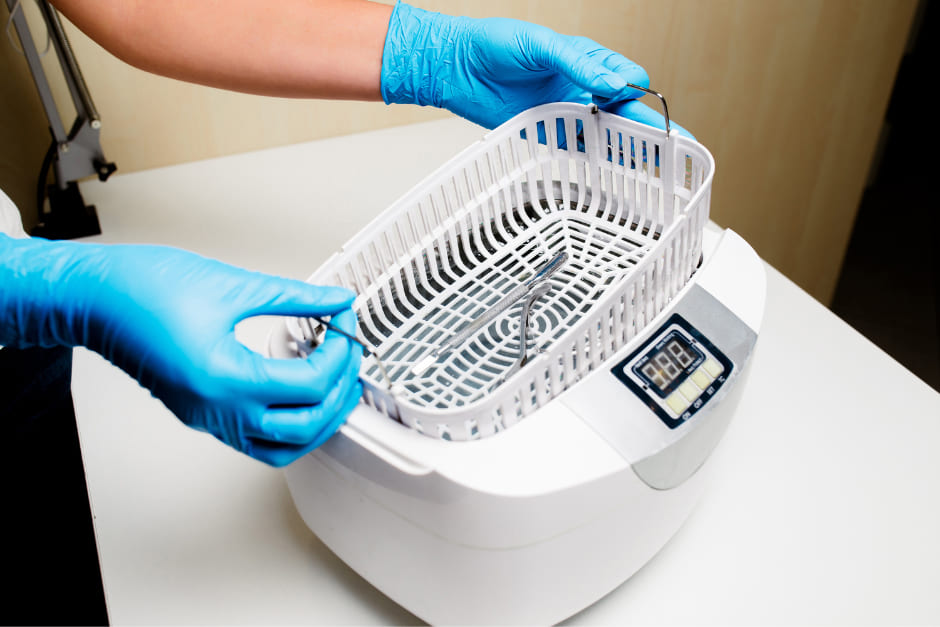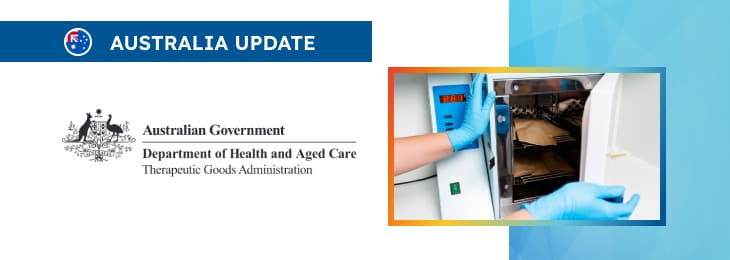The article provides an overview of the regulatory requirements various sterility products are subject to in order to be allowed for marketing and use in Australia.

Table of content
The Therapeutic Good Administration (TGA), an Australian regulating authority in the sphere of healthcare products, has published a guidance document dedicated to the regulatory requirements for disinfectants, sterilants, and sanitary products. The document provides an overview of the applicable regulatory requirements, as well as additional clarifications and recommendations to be taken into consideration by medical device manufacturers and other parties involved in order to ensure compliance.
At the same time, provisions of the guidance are non-binding in their legal nature, nor are they intended to introduce new rules or impose new obligations. The authority also reserves the right to make changes to the guidance and recommendations provided therein, should such changes be reasonably necessary to reflect corresponding amendments to the underlying legislation.
The regulation of disinfectants, sterilants, and sanitary products in Australia is governed by several legislative frameworks, depending on the specific claims made about the product, its intended use, and the type of surface or object it is applied to. These regulations ensure that products used in both medical and non-medical settings meet the necessary safety and efficacy standards.
The present guidance provides a detailed overview of how these products are regulated under Australian law.
Regulatory Frameworks Governing Disinfectants and Sterilants
According to the document, disinfectants and sterilants are regulated under various Australian legislative instruments, depending on the nature and claims of the product.
Key legislative references include:
- Therapeutic Goods Act 1989
- Therapeutic Goods (Medical Devices) Regulations 2002
- Therapeutic Goods Regulations 1990
- Therapeutic Goods Advertising Code (No.2) 2018
- Therapeutic Goods (Standard for Disinfectants and Sanitary Products) (TGO 104) Order 2019
- Poisons Standard (SUSMP)
These regulations differentiate products based on whether they make specific claims about their efficacy, such as virucidal or fungicidal activity, and whether they are intended for use on medical devices or other inanimate surfaces.

Classification of Disinfectants
As further explained by the TGA, disinfectants in Australia are classified into different categories based on their intended use and the claims made about their efficacy:
- Exempt Disinfectants: This category includes hospital-grade or household/commercial-grade disinfectants in liquid, spray, wipe, sponge, and aerosol forms that do not make specific claims (such as virucidal or sporicidal activity) and are not intended for internal use, on skin, or on medical devices. These products are not required to be included in the Australian Register of Therapeutic Goods (ARTG) but must comply with all relevant legislative and regulatory standards, including the Therapeutic Goods Act 1989 and the TGO 104 Order 2019.
- Listed Disinfectants: This category includes similar products that make specific claims regarding their ability to kill microorganisms. These claims include virucidal, sporicidal, tuberculocidal, and fungicidal activities. These disinfectants must be listed in the ARTG before they can be marketed. They are subject to the same regulatory frameworks as exempt disinfectants but must also meet additional requirements related to their claimed efficacy.
Regulation of Medical Devices
Disinfectants and cleaners intended for use on medical devices are regulated as medical devices under Australian law.
The regulation is more stringent due to the potential impact on patient safety:
- Class IIb Medical Devices: This category includes liquids, sprays, wipes, and aerosols used on medical devices. These products must be registered as Class IIb medical devices in the ARTG. They are evaluated against strict guidelines to ensure they meet the necessary safety and efficacy standards.
- Class I Medical Devices: This category includes cleaners intended for use on medical devices that do not claim to be disinfectants or sterilants. These products must be included in the ARTG as Class I medical devices. They are subject to less rigorous evaluation compared to Class IIb devices but still must meet essential safety and quality standards.
Regulation of Sanitisers and Skin Antiseptics
Under the general rule, sanitisers and skin antiseptic products, particularly those used in food preparation areas or that claim to kill bacteria on the skin, are subject to specific regulatory requirements depending on their intended use and claims.
Exempt Sanitisers includes sanitisers used on surfaces in contact with food, which are intended to reduce pathogenic or spoilage microorganisms to a sanitary level. These products are not required to be listed in the ARTG but must comply with the relevant legislative and regulatory standards, particularly the TGO 104 Order 2019.
Over-the-Counter (OTC) medicines include skin antiseptics, such as alcohol swabs that claim to disinfect the skin. These products must be listed as OTC medicines in the ARTG and comply with stringent regulatory standards to ensure they are safe and effective for consumer use.
Case Study: A blood glucose monitor paired with a mobile app for tracking readings would typically include version and build numbers within an “About” screen or settings menu within the app. The convention for these numbers would also be detailed in the instructions for use, ensuring compliance with EP 13B.
Systems and Devices with Multiple Software Components
For complex systems comprising multiple components, each running different software, manufacturers may need to provide separate version and build numbers for each component. This ensures traceability across the entire system.
Where a universal version or build number isn’t applicable, manufacturers must ensure that the provided information is sufficient for stakeholders to trace the device’s software throughout its lifecycle.
Devices Without Build Numbers
In cases where the concept of a build number isn’t used, manufacturers are not required to supply one. They may opt to use other identification numbers like batch or serial numbers, provided these offer clear traceability to the software version in use.
Devices Using the Same Version and Build Numbers
If a manufacturer’s version-control system doesn’t distinguish between version and build numbers, they may indicate that these numbers are identical. This approach is acceptable as long as it maintains traceability.
Excluded Goods and Non-Regulated Products
The authority additionally emphasizes that some products, such as general cleaners without disinfectant claims, certain hand sanitisers, and specific antibacterial skin care products, are excluded from regulation by the TGA. These products are not required to be listed in the ARTG but must still adhere to other relevant consumer safety legislation.
Excluded Goods include products like surface-modifying coatings, protective barriers, and certain gases used as disinfectants or sterilants. These products are excluded from TGA regulation under specific legislative orders, such as the Therapeutic Goods (Excluded Goods) Determination 2018.
Non-Regulated Products include general consumer products, such as detergents that do not claim to have a microbiocidal effect. These products are not regulated by the TGA but must comply with general consumer safety standards and must not contain substances restricted under the Poisons Standard (SUSMP).
Special Considerations for COVID-19 Related Products
The document pays special attention to the products initially designed to be used in the context of the outbreak of the Coronavirus Disease 2019 (COVID-19) caused by the virus SARS-CoV-2 or the “novel coronavirus”. Products represented to be effective against COVID-19, such as bedding, clothing, and towels intended for close contact with the human body, are classified as medical devices and must meet specific regulatory requirements.
This classification ensures that any product claiming to protect against COVID-19 is evaluated for safety and efficacy before being marketed.
Conclusion
In summary, the regulation of disinfectants, sterilants, and sanitary products in Australia is complex and multifaceted, with different rules applying based on the product’s intended use and the claims made about its effectiveness. Understanding these regulations is crucial for manufacturers and sponsors to ensure compliance and for consumers to trust the products they use in both medical and non-medical settings. The detailed guidance provided by the TGA and relevant legislative instruments ensures that these products meet the necessary safety and efficacy standards, protecting public health and safety across various sectors.
How Can RegDesk Help?
RegDesk is an AI-powered Regulatory Information Management System (RIMS) designed to simplify global compliance for medical device companies. With regulatory intelligence covering 120+ markets, RegDesk helps you prepare and publish global submissions, manage standards, conduct impact assessments, and stay ahead of regulatory changes all from a single, centralized platform. Expanding into new markets has never been easier.

